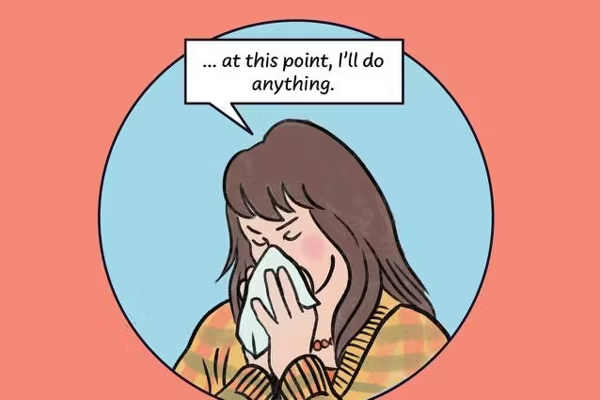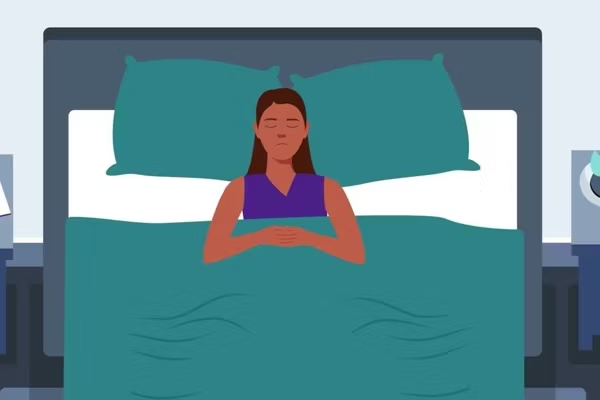Do you ever feel like you're "hitting a wall" when you try to insert something into your vagina? If so, you're not put together wrong. You may just have vaginismus, a condition that causes the vaginal muscles to automatically tighten in anticipation of vaginal penetration. Vaginismus can be frustrating, distressing and painful, but there are many treatment options to help you regain control, comfort — and even pleasure.
What is vaginismus?
People who have vaginismus experience an involuntary spasm of their vaginal muscles, which can be quite painful. This vaginal muscle spasm is an unconscious reaction to the fear of oncoming vaginal penetration. Vaginismus often causes pain during sexual activity, and it can even make inserting tampons, gynecologic exams or intercourse impossible.
Because vaginismus causes painful sex, it is a type of dyspareunia — the medical term for persistent pain before, during or after sexual intercourse. According to the American College of Obstetricians and Gynecologists, three out of four women experience pain during sex at some point in their lives.
Fortunately, people with vaginismus can still experience orgasms from clitoral stimulation and getting treatment can restore their ability to enjoy penetrative sex.
What are the symptoms of vaginismus?
- Difficult, painful or impossible vaginal penetration during sex or insertion of anything into the vagina, including sex toys and tampons
- Pressure in the vagina
- Burning at the vaginal opening
Who gets vaginismus?
Even though 1%-6% of people have recorded vaginismus, doctors believe it's a relatively common condition. It's likely that the condition is underdiagnosed because many people with vaginas are unwilling to discuss their symptoms with healthcare providers (HCPs).
Vaginismus seems to be common among people with sexual interest/arousal disorders. Additionally, communities known for strict religious orthodoxy appear to have more vaginismus cases, but these claims need to be confirmed through more research.
Overcoming the stigma of discussing sexual dysfunction is the first step to treating vaginismus. If it would make you more comfortable, ask if you can take a friend to your appointment with you or request to see a female doctor.
What are the risk factors for vaginismus?
Healthcare experts still don't know exactly what causes vaginismus, but some risk factors include prior surgeries, infections, or childbirth-related injuries, such as vaginal tears. Other risk factors are psychological; anxiety disorders and negative feelings about sex, perhaps stemming from past sexual trauma, are both linked to vaginismus. Individuals who have experienced relationship problems or had a painful first intercourse are at an increased risk for developing vaginismus.
How is vaginismus diagnosed?
After discussing your symptoms and sexual history, vaginismus can be diagnosed very quickly through a pelvic exam, which includes a muscle evaluation. Since pelvic exams can cause painful muscle spasms in vaginismus patients, your HCP can make this process less painful by applying topical numbing cream outside your vagina before your exam, or they may help you with relaxation exercises. HCPs will use your medical history and a complete physical exam to rule out other conditions that cause pain with sexual intercourse.
Vaginismus is included in the Diagnostic and Statistical Manual of Mental Disorders (DSM), the American Psychological Association's manual of official psychiatric diagnoses, because of the psychological aspects of the condition. In fact, the DSM recently incorporated vaginismus into a larger condition called genito-pelvic pain/penetration disorder (GPPPD). To qualify for a GPPPD diagnosis, you must experience at least one of the following symptoms for a minimum of six months:
- Pain accompanying sexual intercourse
- Vulvovaginal or pelvic pain during either attempted or completed intercourse
- Fear or anxiety surrounding your pain from vaginal penetration
- Tightening pelvic floor muscles in anticipation of vaginal penetration
How is vaginismus treated?
Treatment methods for vaginismus can help get rid of its painful and scary symptoms. Treatments focus on managing any negative emotions that surround vaginal penetration. Women can learn to do exercises at home to control and relax the muscles around their vagina. Additionally, pelvic physical therapists are wonderful at helping women relax and become comfortable with exercises, using vaginal dilators and other methods to alleviate anxiety about penetration.
- Progressive desensitization: This is the most effective therapy for vaginismus. In this therapy, people use their fingers or vaginal dilators to gradually become more comfortable with vaginal touching and, eventually, vaginal penetration.
- Sex therapy: This form of talk therapy helps inform patients about their anatomy and improves their feelings surrounding their body and sex life. This often helps women whose vaginismus is linked to fear or anxiety.
- Pelvic floor exercises: These exercises help people regain control of their vaginal muscles. Common exercises include Kegel exercises and mindfulness and deep breathing.
These treatments seem very different from one another, but all focus on stopping the painful, involuntary muscle spasm. Vaginismus treatments do require time and patience, but their success rates are outstanding at above 90%.
Does vaginismus lead to other health issues?
Vaginismus, which may come from anxiety disorders, can also increase anxiety symptoms. A recent study found that people with vaginismus struggle with viewing themselves negatively, which can, in turn, lead to mental health issues such as anxiety. In particular, people with vaginismus carry a lot of anxiety around the idea of penetration, and some may experience panic attacks if they engage in intercourse.
Vaginismus can also lead to trouble conceiving, increased fertility problems and increased cesarean section rates. Further, people with vaginismus are also less likely to seek health care because they're afraid of having internal pelvic exams, which puts them at risk for undetected cervical cancer, STIs and more.
Vaginismus can affect your sex life, relationships and self-confidence. At times, it may feel impossible to be intimate when you're coping with a medical condition that prevents you from enjoying penetration. No matter how frustrating vaginismus can become, it's important to remember that you are never at fault for the pain you experience. It takes bravery to communicate your needs with your partner and HCPs, and treatment takes patience. You can regain control of your body — and it's never too late to ask for help.
Not all gynecologists are trained in the diagnosis and treatment of vaginismus. If you feel you have the symptoms and are not getting the answers from your HCP, we encourage you to go to the National Vulvodynia Association and find a provider in your local area.
- When Sex Gives You More Pain Than Pleasure - HealthyWomen ›
- Female Sexual Dysfunction Defined - HealthyWomen ›
- From Vaginismus to Pleasure Warrior - HealthyWomen ›
- What Is Vaginal Rejuvenation? - HealthyWomen ›
- Good Sex with Emily Jamea: How To Cope With Your Partner’s Sexual Dysfunction - HealthyWomen ›






